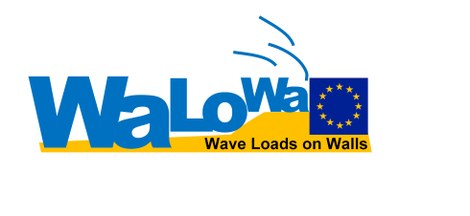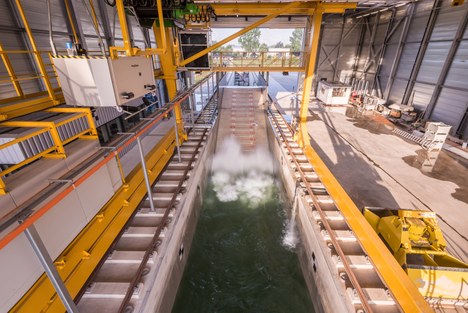The Department of Civil Engineering of Ghent University coordinates the European Hydralab+ "WaLoWa" project
The Coastal Engineering Research Group (CERG) of the Department of Civil Engineering of Ghent University coordinates the "WaLoWa" project funded by the European Hydralab+ Programme. CERG has been participating in Hydralab since the beginning of the programme, back in 1997, by leading research projects and by participating in several international consortia of pioneering research topics from coastal engineering and renewable energy.
WaLoWa - Wave Loads on Walls
Coasts of low lying countries, such as The Netherlands, Belgium, the UK and Germany are often comprised of a gentle foreshore and shallow waters, followed by a dike and a promenade. At the end of the promenade buildings or storm walls are constructed. This setting makes it possible for waves to overtop the dike and impact on the storm wall or building. Especially during storm season the overtopping waves induce large forces on these structures. New scenarios for climate change and sea level rise make it worthwhile to invest in research regarding overtopping wave impacts.
Within the European project ‘Wave Loads on Walls’ (WaLoWa) model tests in the Delta flume (The Netherlands) have been conducted. It is the aim to study overtopping wave impacts on storm walls and buildings. The project is a cooperation of Ghent University (Belgium), TU Delft (The Netherlands), RWTH Aachen (Germany), University of Bari and University of Florence (Italy) and Flanders Hydraulics Research (Belgium). The project is financed by a grant by Hydralab+ in the framework of the EC Horizon 2020 program. The program provides researchers with the opportunity to use the large scale coastal engineering test facilities in Europe.
Generic impression of the Delta Flume facility
(photo: John Verbruggen)
A model geometry comprised of a sandy beach, a sloping dike, promenade and wall structure is built into the Delta flume. The beach alone consists of 1000m³ sand material and is an essential part of the structure, to obtain the broken wave conditions similar to reality. Waves representing a storm with a 1000 year return period and an additional water level to account for sea level rise result in the tested superstorm conditions. During the tests the impact forces and pressures on the wall are measured and eventually related to the incoming wave and structural parameters. The results are compared with small-scale experiments featuring the same geometry and wave conditions, to enable an investigation of scale effects and the possible influence of aeration of the impacting flow. Additionally the overtopping flow formation are studied to better understand the complex interaction between incoming and reflected waves on the promenade.
Movie by Deltares

More info
Coastal Engineering Research Group (CERG-AWW) homepage

